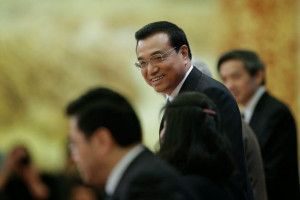
Over the last years, much closer attention has been paid to Latin America. This is also due to the fact that the Western coast of the continent lies along the Pacific Ocean, which is clearly becoming more and more as an arena for strategic rivalry between the PRC and both of its geopolitical opponents – the United States and Japan.
Beijing’s currently heightened interest in Latin America was preceded by a prophesy of one of the fathers of modern China, Deng Xiaoping, who over thirty years ago predicted this continent’s vital role in the worldwide policy.
In this sense, it doesn’t seem occasional that the three of four countries (Columbia, Chile and Peru) visited by the Prime Minister of China, Li Keqiang, during his tour through Latin America held on May 18-26 this year, make up an ample portion of the continent’s Pacific coast.
Aside from this, the last two of these countries are participants of the negotiation process on forming a Trans-Pacific Partnership (TPP), an American anti-Chinese project.
For this reason, the involvement of Latin American countries, participating in the TPP, into more enticing economic projects has also a strategic goal for China. Even more, Latin America is becoming the second (after the Middle East) greatest crude supplier on the world market.
Its mining and transportation to the Pacific or Atlantic coasts, as well as pumping into oil sea tankers fosters the problems concerning the development of the transport infrastructure network, and energy of countries on the continent.
For a number of Latin American countries (Venezuela, Ecuador, Argentina), developing relations with the PRC emerges as an alternative to their complicated political relations with the USA.
China is the leading overseas creditor for Latin American countries and greatest importer of their goods. During the last decade only Venezuela received 45 billion dollars from the PRC in exchange for crude oil. Money received is generally allocated for social sphere and for the country’s energy development.
At year end 2014, China had 57% of the total foreign trade turnover of the continent. In January 2015, Chinese President Xi Jinping, a year earlier having already made a tour to several Latin American countries, said that within the next decade the amount of China’s trade with all countries of the continent will exceed $500bn, and the amount of mutual investment will reach $250bn. Currently, these figures are approximately $260bn and $65bn.
The Prime Minister’s first stop was Brazil, the largest country on the continent, with which he had signed a number of mutual agreements. Within these decisions, different economic projects will be initiated, the overall amount of which is $27bn.
Here it was announced that China is creating a special fund of $30bn with the goal to finance the development of cooperation with these countries in the area of producing various types of industrial equipment. Both parties also noted the progress in forming the BRICS Development Bank.
At the meeting with Brazilian President Dilma Rousseff Lee, China’s intentions to participate in the construction of the transcontinental railroad were confirmed, which also passes through the territory of Peru, linking the Atlantic and the Pacific Oceans.
The foundational decision on this project was made during the last mentioned Xi Jinping’s tour to Latin America. Chinese experts assert that this railroad “will put certain pressure” on the scale of US controlled operations in the Panama Canal.
News analysts of the Chinese Prime Minister’s visit to Brazil saw some clear symbolism in his riding the Rio De Janeiro subway and ferry built with the help of China.
Then Li Keqiang in-turn visited Colombia, Peru and Chile. A few dozen bilateral agreements pertaining to varied spheres of economic cooperation were signed here.
The marked attention that the honoured guest devoted to respecting national culture and history of these nations could in no way go unnoticed. He certainly made a positive impression on his hosts, in particular, Li Keqiang’s visit to the birthplace of the famous Colombian writer, Gabriel Garcia Marquez, who died last year, and during his lifetime became a symbol of modern culture in Latin America as a whole.
Finally, it should again be emphasized that beyond the purely economic aspects of China’s increased attention devoted to Latin America, plans for the new (regional and global) “Big Game” that is developing after the completion of the “cold war” are plain to see.
Each of the two parties chiefly involved (quite traditionally) are being active in the “back yard” of their opponent. For the USA, this is Latin America, for China – the South China Sea and, a little broader, South-East Asia.
In terms of actual policy, the issue of who struck first and who retaliated has no more meaning than the question of the chicken and the egg.
Vladimir Terekhov, expert on the Asia-Pacific region, specially for the online magazine “New Eastern Outlook”.
